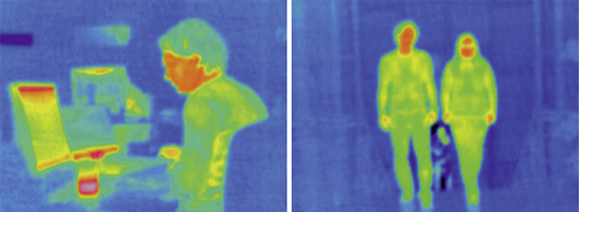
Technology and detection area: How does a motion detector work?
Motion detectors work by using passive infrared sensors (short "PIR") and react to thermal radiation in the immediate surrounding. Static heat differences are not detected. The infrared sensors of the motion detectors react to thermal radiation that changes quickly, such as people ascending stairs or cars approaching a house. If a motion detector detects this thermal radiation in its detection area, it converts it into a measurable electrical signal: The light is switched on.
Motion detectors are not exclusively, but mainly designed for outdoor use. While presence detectors, due to their sensitive sensors, detect slightest movements, motion detectors especially detect more significant changes, such as walking, running or gesticulation. A further difference is the light measurement. In contrast to presence detectors, which permanently measure the light, motion detectors only measure the brightness when being switched on. Therefore, they are not intended for indoor brightness control. Motion detectors excellently detect significant spatial changes (upper thermal image). For slight motions, e. g. during seated activities (lower image), presence detectors are better suited.

